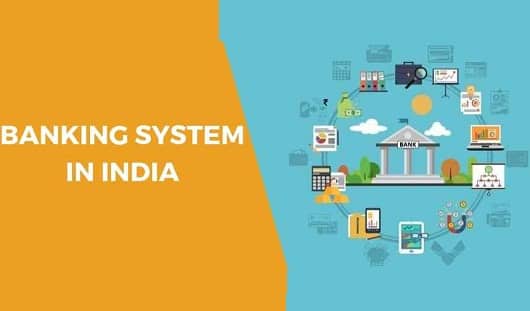History of Banking in India is something which everyone was aware of. The informal banking sector existed in India even before the 1600s but today, the sector has been formalized. In addition to this, it is known that the first bank in India was established in 1770 and it was known as Bank of Hindustan.
Today, one of the oldest Bank in India is the State Bank of India which started in the year 1806 as Bank of Calcutta. In this article, we are going to talk about the Structure of Banking System in India along with some other details.
Structure of Banking System in India – A Brief Introduction
Talking about the structure, the Central Bank of India is the Reserve Bank of India. There are two branches to Reserve Bank of India which are Schedule Banks and Non-Schedule Banks. As per the information available, the Schedule Banks are further divided into two categories which are known as Commercial banks and the second one is known as Co-Operative banks.
We will first talk about Co-Operative Banks and they are further divided into three categories which are known as State Co-operative Banks, District Co-Operative Banks and Other Co-Operative Banks. Coming back to Commercial banks, they are divided into four categories which are Public Sector Banks, Private Sector Banks, Foreign Banks and Regions Rural Banks. There is an addition to the category here which is Payment Banks. Moving ahead, it is known that Public Sector Banks are further categorized into three categories which are SBI and Associate Banks, nationalized Banks and Other Public Sector Banks

Phases of the Banking Sector in India
We will talk in details about this structure but before we move ahead, you must know that the evolution of banking in India can be categorized in four phases which are Phase 1, Phase 2, Phase 3 and Phase 4. Phase 1 is known as Pre Nationalization Phase which is prior to 1955. The next phase is known to be the Era of Nationalization and Consolidation which was between 1955 and 1990. The next phase was known as the Introduction of Indian Financial and Banking Sector Reform which is often marked as Liberalization Phase. This lasted from 1990 to 2004. The last phase is referred to as the period of increased liberalization and it is anything 2004 on wards.
Structure of Bank
Reserve Bank of India
As mentioned earlier, this is the central bank of India and it is also the regulatory body. The RBI was incepted in the year 1935 and apart from being a regulatory authority, RBI is also known to perform development and promotional functions. RBI is also referred to as Bank of the Bank. RBI also has the power to formulate the monetary and credit policy. In India, RBI is also known to issue the bank notes.
Scheduled Banks and Non-Scheduled Banks
These two are the categories of the RBI but you must know that there is a huge difference between Scheduled and Non-Scheduled Banks. The Scheduled Banks are the one which is enshrined as per the second schedule of the RBI Act of 1934. In addition to this, the scheduled banks have a paid-up capital along with the reserves. Moreover, it is important for Scheduled Banks to meet the criteria listed by RBI. On the contrary, Non-Scheduled Banks are the one which is not listed in the second schedule of the act.
Commercial Banks
This is a categorization of Schedule Banks and the thing that you need to note about Commercial Banks is that they have the authority to take your cash deposit and off your loan as well. The service revolves around deposits and lending. Commercial Banks provide services to a wide range of sector and customer.
Co-Operative Banks
Co-Operative Bank is another category of Schedule Banks and they are incepted in line with the co-operative act of 1904. It is known that these institutes are managed by the co-operation of various entities and they are known for providing the credit to the rural customers. There are many co-operative banks in India and they are also three-tier which exists in co-operative banks.
Public Sector Banks
This is a category under Commercial Banks and the main definition of Public Sector Bank is that these banks are owned by the government and are listed one exchange. It is known that there are 21 nationalized banks in India presently and all public sector banks can be categorized in the three categories which are SBI and Associate Banks, nationalize Banks and Other Public Sector Banks.
Private Sector Banks
This is a category under Commercial Banks and by definition, Private Sector Banks are owned by the private entities in terms of major shareholding. Apart from this, there can be cases when a portion of the bank will be owned by the government but the major portion would remain to be privately owned. There are around 12 Private Sector Banks in India at the moment.
Foreign Banks
This is a category under Commercial Banks and they have a host country which is not India. These banks are bound to follow the norms of the host country as well as India. In addition to this, these banks have head offices outside India. The example of this can be the Citi Bank and Standard Chartered Bank.
Regional Rural Banks
This is a category under Commercial Banks and the main focus of these banks is to provide services to rural part of the country. Presently, there are 82 Regional Rural Banks in India and they are mostly dedicated to the agricultural sector.
Payment Banks and Microfinance Institutes
This is a new type of bank which emerged and these banks can’t offer credit. They can only offer payment solutions. An example of this can be the Paytm Payment Bank or Airtel payment Bank. For Microfinance Banks, they offer small loans and there are several such institutes in the country.
This was all about the structure of the Banking System in India. We hope that the information listed above helps you in increasing your knowledge base and you are able to understand the basic structure of the Banking System.
Santosh Kumar, the author behind IndiasStuffs.com, is passionate about sharing valuable insights on a variety of topics, including lifestyle, technology, and Indian culture.

